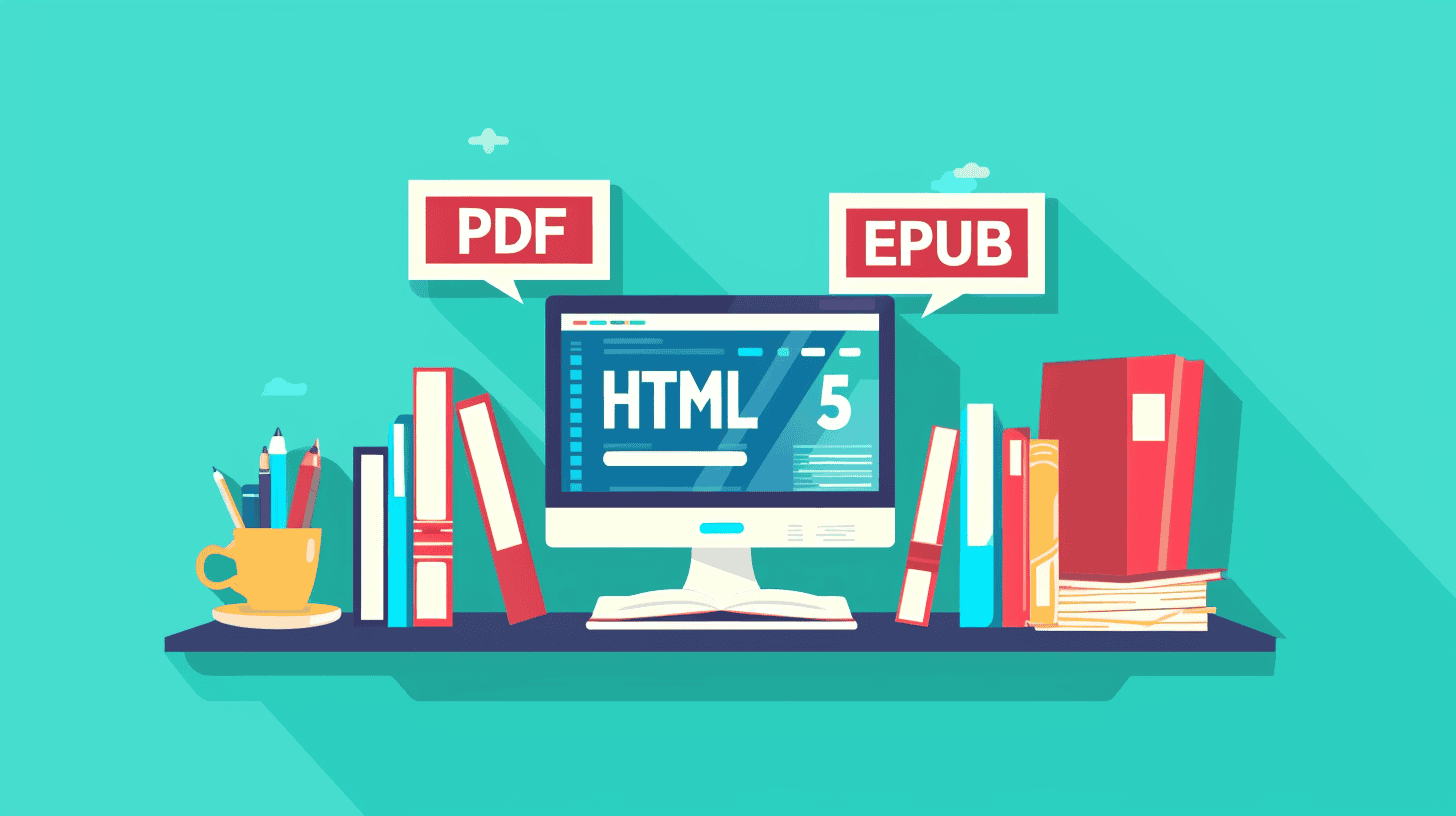In today’s digital age, the ebook market is booming, offering an unprecedented opportunity for authors and entrepreneurs to reach a global audience with their written work. However, with so many ebooks flooding the market, standing out and successfully selling your ebook requires more than just great content. It demands a strategic approach that encompasses everything from understanding your target audience to optimizing your ebook listing and leveraging effective marketing tactics.
Discover how to transform your ideas into a compelling ebook that captures readers’ attention and achieves your publishing goals. Dive in and start your journey to becoming a successful ebook author today!
Understand Your Target Audience
Before we dive into the intricacies of selling your ebook, you need to understand who you’re writing for. Knowing your target audience can make a significant difference in how you craft, price, and market your ebook. This involves identifying their demographics, interests, and reading habits. Ask yourself:
- Who is most likely to benefit from or enjoy my ebook? Consider factors like age, gender, profession, and lifestyle.
- What are their interests and preferences? Understand the genres they enjoy, the topics they’re passionate about, and the type of content they prefer.
- Where do they spend their time online? Knowing the websites, social media platforms, and forums they frequent can help you target your marketing efforts more effectively.
Creating a detailed reader persona can guide your writing and marketing strategies, ensuring that your content resonates with your intended audience.
Conducting Market Research
To gain a deeper understanding of your target audience, conduct thorough market research. This involves gathering insights about potential readers and analyzing market trends. Here’s how to approach it:
- Use Online Tools: Platforms like Google Trends, social media analytics, and survey tools can provide valuable data on reader interests and behavior.
- Study Competitors: Examine the ebooks similar to yours and identify their target audience. Look at their reviews, ratings, and marketing strategies to understand what works and what doesn’t.
- Engage with Your Audience: Connect with potential readers through social media, forums, and online communities. Ask for feedback and listen to their needs and preferences.
Effective market research not only helps you tailor your ebook to your audience’s tastes but also informs your marketing and distribution strategies.
By understanding your target audience, you lay a strong foundation for every subsequent step in the ebook selling process. It ensures that your content is aligned with reader expectations and that your marketing efforts are focused and impactful.
Create a High-Quality Ebook
To capture the attention of readers and drive sales, your ebook needs to be more than just good—it needs to be exceptional. We’ve already covered the topic of ebook writing on our blog, so feel free to read that post to get all the details.
Do you want to know how to ensure your ebook stands out from the crowd? Let’s talk about high-quality content, design, and formatting:
Writing Engaging Content
The heart of any successful ebook is its content. To create a compelling ebook, focus on:
- Crafting a Captivating Story or Argument: Whether you’re writing fiction or non-fiction, ensure your content is engaging and holds the reader’s interest from start to finish. Develop strong narratives, clear arguments, and memorable characters or insights.
- Maintaining Clarity and Consistency: Use clear and concise language, and maintain a consistent tone and style throughout your ebook. This helps readers easily follow your ideas and stay engaged.
- Editing and Proofreading: Thoroughly edit and proofread your manuscript to eliminate errors and improve readability. You can use online tools, like our Rich Text Editor, to bring your writing style to the next level. When your final draft is done, consider hiring a professional editor to provide an objective review and polish your work.
Designing an Attractive Cover
Your ebook cover is the first impression readers will have of your book, so make it count:
- Professional Design: A well-designed cover can significantly impact your ebook’s appeal. Invest in a professional designer or use high-quality design tools to create a cover that reflects the content and attracts potential readers. Of course, you can also go the DIY route and design your cover on your own.
- Eye-Catching Visuals: Incorporate striking visuals, legible fonts, and a color scheme that aligns with your ebook’s theme. Ensure the cover looks good in both full-size and thumbnail formats, as it will be viewed in various sizes online.
Formatting for Readability
Proper formatting is crucial for a seamless reading experience. Here’s how to get it right:
- Consistent Formatting: Use consistent fonts, headings, and spacing throughout your ebook. This enhances readability and ensures a professional appearance.
- Responsive Design: Format your ebook to be compatible with various devices and screen sizes, including e-readers, tablets, and smartphones. Tools like Adobe InDesign or Scrivener can help with this.
- Table of Contents and Navigation: Include a well-organized table of contents and easy navigation links to enhance user experience and make it easier for readers to find specific sections.
Don’t forget about these aspects of ebook creation. If you pay attention to them, you ensure that your book not only attracts readers but also provides them with a high-quality reading experience that encourages positive reviews and recommendations.

A Word About Ebook Design – Enhancing Visual Appeal and Readability
If you’re wondering how to make an ebook to sell it well, you need to pay attention to its design. Whether you’re aiming for a text-heavy format or a more visual approach, the design elements you choose can significantly impact the reader’s experience. Pay attention to these steps if you want to release best-selling ebooks:
Incorporating Visuals
Visuals play a vital role in breaking up text and adding interest to your ebook:
- For Text-Heavy Formats: Integrate visuals strategically to break up dense sections of text and provide visual relief. This can include charts, infographics, and relevant images that complement the content and enhance understanding.
- For Expert Knowledge Ebooks: Avoid generic stock photos that don’t add value. Instead, use data visualizations like graphs, charts, and tables to present complex information in a more digestible format. This approach not only adds visual richness but also enhances the educational value of your ebook.
Adding Illustrations for Fiction
For fiction books, visuals can enrich the reader’s experience. Oftentimes, great illustrators make a name for themselves, too, so never underestimate the power of custom ebook drawings!
- Chapter Illustrations: Consider including small, creative illustrations at the beginning of each chapter. Even simple decorative elements like a unique chapter number design can add a personal touch and engage readers more deeply.
- Title and Chapter Pages: Use creative designs for title pages and chapter headings to create a cohesive and visually appealing layout.
Essential Pages for Your Ebook
Here’s a quick rundown of the pages your ebook should include:
- Cover: As we mentioned earlier, this is the first impression of your ebook. As such, it should be eye-catching and reflective of your content.
- Info Page: Includes copyright information, ISBN, year of publication, disclaimers, acknowledgments, and primary sources.
- Table of Contents: Provides an organized overview of the ebook’s structure.
- Content Pages: The core of your ebook, where you present the main content.
- About the Author: A section introducing yourself and your background.
Templates vs. Custom Design
When it comes to putting everything together, you have two main options:
- Choosing a Template: Templates are a great way to get inspired and streamline the design process. They are especially useful for free ebooks or shorter projects, but they can also be adapted for longer, paid ebooks. Look for templates on platforms like Behance or Renderforest; you can customize them by adding, removing, or duplicating pages as needed.
- Designing from Scratch: If you prefer a unique design, creating from scratch allows you to add your own flair. This option requires a higher level of design expertise and more time. Start by planning your formatting, taking notes from other designs, and testing sample pages before finalizing your ebook.
Choosing the right approach depends on your design skills and the specific needs of your ebook. Whether you opt for a template or custom design, ensure that your ebook’s visual elements enhance its readability and overall appeal – it’s what can make or break your ebook sales.
Download & Publish Your Ebook
Once you’re confident that your ebook is ready to go, it’s time to prepare it for publication and distribution. Here’s a step-by-step guide to help you download and publish your ebook effectively:
Choosing the Right File Format
Choosing the appropriate file format for your ebook is crucial for ensuring that it’s accessible and readable across various devices. Here’s a quick overview of the commonly used ebook formats:
- Printable PDF: Ideal for static content or ebooks with active links. A PDF maintains consistent formatting across devices but requires careful delivery planning, such as providing download links or using file-sharing services.
- Interactive PDF: Enhances the standard PDF with interactive elements like clickable links and forms. Suitable for ebooks that benefit from user engagement and interactivity.
- Multimedia/Interactive HTML5: Best for ebooks with rich media content, such as videos and animations. HTML5 allows for dynamic and interactive experiences but may require more complex setup and testing.
- EPUB: A widely supported format designed for reflowable text, making it ideal for most ebooks. EPUBs adapt to different screen sizes and are compatible with various e-readers and devices.

Delivering Your PDF Ebook
If you opt for a PDF format, here are several methods for distributing your ebook:
- Upload to Your Website: You can upload the PDF to your website and generate a download link. This method is straightforward and allows you to control how the ebook is accessed.
- Use Dropbox: Add the PDF file to a Dropbox folder and create a shareable link. To ensure the file downloads automatically when clicked, change the last digit of the link from “0” to “1” before sending it to clients.
Publishing on Online Platforms
If you plan to sell your ebook via online distributor or publisher sites, you’ll likely need an EPUB or Word document file. Here’s how to prepare for that:
- Convert PDF to EPUB: For ebooks primarily composed of text, you can use an online converter to change your PDF into an EPUB format. This format is better suited for reflowable text and is widely supported by various platforms.
- HTML5 to EPUB: If your ebook contains numerous visuals and requires a responsive design, consider downloading it as an HTML5 file and then converting it to EPUB. This ensures that the ebook maintains its layout and interactive elements across different devices.
- Word Document Upload: Alternatively, you can upload your Word document file directly to the publishing site. Many platforms will automatically convert the document to the required format for you.
Final Steps
Before finalizing your publication, ensure that all formatting, links, and visuals are intact and functioning correctly. Test the ebook on different devices to verify that it displays well and provides a smooth reading experience. Once you’re satisfied, proceed with the publishing process and start promoting your ebook to reach your audience and sell it.
Optional: Get an ISBN For Your Ebook
Before you finalize the design and distribution of your ebook, consider whether you need an International Standard Book Number (ISBN).
An ISBN (International Standard Book Number) is a unique numeric code assigned to each book, including ebooks. It helps identify your book in databases, making it easier for distributors and retailers to manage and sell your ebook. While not all platforms require an ISBN, having one can enhance your book’s visibility and credibility.
When Is an ISBN Needed?
- Distribution and Retail: Most publishers and distributors require an ISBN to list and sell your ebook. This includes online retailers and libraries that use ISBNs to catalog books.
- Exceptions: Certain platforms, like Amazon for Kindle ebooks, and some digital download sites such as Gumroad, do not require an ISBN. These platforms use their own systems to identify and manage books.
Price Your Ebook
If you want to know how to sell an ebook, you also need to learn how to price it. Setting the right price for your ebook is crucial for maximizing sales and ensuring profitability. Our guide should help you determine an effective pricing strategy:
Conduct Market Research
Again, market research is essential here. Start by researching the pricing of similar ebooks within your niche. Look at how other authors are pricing their books on comparable topics and platforms. This will give you a benchmark for setting your own price and understanding what readers are willing to pay.
Understand Pricing Psychology
Pricing psychology plays a significant role in how consumers perceive value:
- Decimal Pricing: Notice how prices often end in .76, .89, or .99. This pricing strategy, known as psychological pricing, makes prices seem lower than whole numbers. For example, $16.99 appears more appealing than $17.00, even though the difference is minimal.
- Value Perception: Align your pricing with the perceived value of your ebook. Higher prices might be suitable for specialized, expert-level content, while lower prices could work better for general or introductory material.
- Sales Goals: Determine how many copies you aim to sell and set your price accordingly. For instance, a lower price might drive higher sales volumes, while a higher price might require fewer sales to reach your profit goals.
Account for Platform Fees
Different platforms charge varying service fees for ebook distribution. When setting your price, factor in these fees to ensure that you are still making a profit:
- Platform Fees: Review the fee structure of the platforms where you plan to publish and distribute your ebook. Deduct these fees from your selling price to calculate your net earnings.
- Mark-Up: Price your ebook high enough to cover platform fees and still provide you with a satisfactory profit margin.
Calculate Your Costs
To determine a profitable price, consider all costs associated with creating and marketing your ebook. First, there are the creation costs, which consist of the time and resources spent on writing, editing, designing, and formatting your ebook. Then there are also marketing expenses. Here, you should factor in any costs for marketing and promotion, such as advertising, website maintenance, and promotional materials.
Finalize Your Pricing Strategy
Combining these factors will help you set a price that maximizes both sales and profitability. Ensure your price is competitive within your niche but also reflects the quality and value of your ebook. However, you should also be open to adjusting your price based on market response and sales performance. Running promotions or discounts periodically can also attract more readers and boost sales.
We get it – that’s a lot of factors. However, by carefully evaluating these elements, you can set a price that not only attracts readers but also ensures you achieve a profitable return on your ebook investment.

Choose the Best Platforms for Ebook Distribution
How to sell ebooks that are profitable and reach your target audience? You need to choose the right platform (or platforms) for distributing your work.
Here’s a breakdown of some of the best distribution channels for your ebook:
Major Online Retailers
- Amazon Kindle Direct Publishing (KDP): The largest and most popular platform for ebooks. KDP offers a vast audience and robust marketing tools, making it an essential choice for many authors. Amazon handles the distribution and provides a range of promotional options.
- Apple Books: Ideal for reaching readers using Apple devices. Publishing through Apple Books allows you to tap into a dedicated user base and leverage Apple’s ecosystem for visibility.
E-Bookstores and Marketplaces
- Barnes & Noble Press: Distributes your ebook to Nook users and provides additional marketing opportunities. This is a good option for reaching readers who prefer Nook devices.
- Kobo Writing Life: Useful for reaching international readers, especially in regions where Kobo is popular. It also offers opportunities for promotional campaigns.
Direct Sales Platforms
- Gumroad: Allows you to sell your ebook directly to readers through your website. Gumroad handles payments and file delivery, giving you more control over pricing and customer interactions.
- Payhip: Similar to Gumroad, Payhip lets you sell directly to consumers with features like discount codes and affiliate marketing. Ideal for building a direct relationship with your readers.
Aggregators
- Smashwords: Distributes your ebook to multiple retailers and libraries. Smashwords provides broad reach and a user-friendly platform for managing your ebook’s distribution.
- Draft2Digital: Another aggregator that helps distribute your ebook to various platforms, including Amazon, Apple Books, and Barnes & Noble. It simplifies the distribution process and offers additional tools for formatting and promotion.
When choosing distribution platforms to sell your ebook, consider where your target audience is most active, whether on global or niche markets. Compare the fees and royalty structures of different platforms to ensure you get the best return on your sales. We also recommend considering platforms that offer a user-friendly interface and robust support to streamline the publishing and management process.
Develop an Effective Marketing Strategy
How to sell an ebook if nobody knows about it? A well-crafted marketing strategy is essential for promoting your ebook and reaching potential readers. If you want to develop a plan that maximizes your ebook’s visibility and drives sales, try these strategies:
Build a Strong Online Presence
- Author Website: Create a professional website to showcase your ebook, provide information about yourself, and offer a platform for readers to purchase or download your book. Include engaging content like blog posts or sample chapters to attract visitors.
- Social Media: Leverage social media platforms such as Facebook, Twitter, TikTok, and Instagram to promote your ebook. Share updates, engage with followers, and use targeted ads to reach a broader audience. Utilize visual content, reels and interactive posts to drive interest and encourage sharing. You can also run some contests to promote your ebook.
- Ebook Launch: Plan a strategic book launch to generate buzz and excitement. Consider offering limited-time discounts, hosting virtual launch events, or partnering with influencers to amplify your reach.

Use Email Marketing
Build and maintain an email list to keep readers informed about your ebook and any upcoming promotions. Send regular newsletters with updates, exclusive content, and special offers to keep your audience engaged and encourage repeat purchases.
Leverage Reviews and Testimonials
Encourage readers to leave reviews and testimonials for your ebook on platforms like Amazon and Goodreads. Positive reviews can enhance credibility and attract new readers. Reach out to book bloggers and influencers for reviews and endorsements to further boost visibility.
Analyze and Adjust
Regularly analyze the performance of your marketing efforts using metrics such as website traffic, social media engagement, and sales data. Use this information to refine your strategy, make data-driven decisions, and continuously improve your promotional activities.
Final Thoughts
The journey to selling your ebook is not just about the technicalities—it’s about sharing your unique voice and expertise with the world. Imagine seeing your work in the hands of eager readers, making a tangible impact, and earning income from your passion. This is your chance to become a published author, to provide valuable insights or captivating stories that resonate with readers.
Don’t let your hard work go unnoticed. Take the reins, follow these steps, and sell your ebook with confidence. Sure, it requires more than just writing and publishing; you also need a strategic approach to design, pricing, distribution, and marketing.
In the end, it’s all going to be worth it – so go ahead, seize the opportunity and turn your ebook into a success story. With dedication and strategy, you’ll not only share your knowledge but also achieve your goals of recognition and financial reward.
Ready to streamline your ebook creation and formatting process? Try online text editors at Voxtury and experience how easy it is to design, format, and perfect your ebook. For more tips and guides on book publishing and more, check out our blog posts!
SOURCES
At Voxtury, we prioritize using high-quality sources, including peer-reviewed studies, to ensure our articles are accurate, reliable, and trustworthy. To learn more about our commitment to quality and how we fact-check our content, please visit our editorial process page.
- ProGlobalBusinessSolutions – 10 Ebook Publishing Platforms for Ebook Self-Publishing
- Business – The Game of Pricing: How the Number 9 Affects Purchase Behavior
